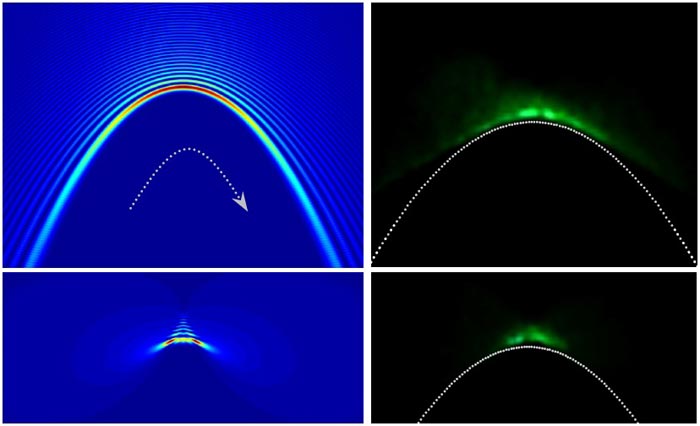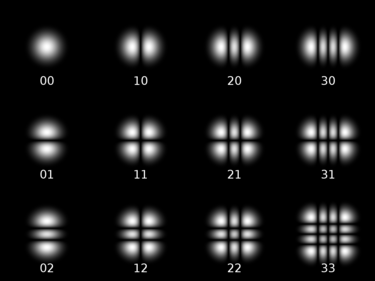The Shape of a Light Beam
Most recent answer: 7/26/2014
- maverick (age 16)
maryland
Hi Maverick,
Great question! A great deal of time is spent in optics research trying to modify light beams into useful or interesting shapes. There certainly are some "shapes" that we cannot make out of light, but with enough effort and technology we have a great deal of control of how light behaves. In this discussion, I'll just be talking about classical beams of light. (If you also consider quantum properties of light, you get even more interesting effects!) The shape of a light beam is specified by the source, the kind and shape of material it travels in, and the wave equation.
One standard way of changing the shape of a light beam is to confine it in a "wave-guide", which is basically a specific size, shape, and kind of material used to force light to take some specific profile. For example, current communication networks use optical fibers to send signals of light in specific pulses and mode shapes; nice pictures of these mode shapes can be found on Wikipedia at https://en.wikipedia.org/wiki/Fiber-optic_communication. These specific wave shapes are especially useful for science, medicine, and communication applications.
For more visually interesting shapes, people usually use holographic plates or adaptive optics, which give you precise control over the phase and intensity of the beam at each point. Using these methods, you can do all kinds of neat tricks, including helping telescopes see through clouds
In fact, even though single photons always travel in straight lines, it turns out you can make them bend! (Note that this light couldn't actually bend around a corner. Only the brightest part of the beam was designed to travel in this odd way, and if you redid their experiment without the entire beam, you wouldn't get this cool effect.)

So, while the wave equation always constrains the form of our light wave, we can change the beam's phase, intensity, and environment to change its exact behavior and shape, for experimentation and practical application.
David Schmid
(published on 02/24/2013)
Follow-Up #1: More light shaping: striped light
- Maximilian Eich (age 23)
Heidelberg , Germany
Dear Maximilian,
That's an interesting question... really, it depends. I don't think that there exists something quite like what you are looking for, but some things come close. Probably the closest you could get would be to have a light source that pulses periodically, so that it is on and then off and then on again. However, you won't be able to see these stripes, because the light is traveling SO FAST in the forward direction that your eye can't see the difference.
If you wanted stripes that were static in time, so that your eye could maaybe see them, then a first thought might be to have two beams travelling in opposite directions (like in a cavity):

As you can see, there are regions where the electric field goes to zero (evenly spaced), and in between are regions where the electric field is maximum. (The magnetic field has the same pattern, but shifted so that where the electric field is zero, the magnetic field is maximum. But our eyes, and most detectors, only see the electric field, so we'll neglect that for now.)
This works for light, or any kind of wave. Unfortunately, for visible light, the spacing between these bright and dark lobes would be so small that you wouldn't see it. But you can see/hear "striped waves" in water or strings or sound other (slower) waves! Here is an example:

If you want striped patterns in the cross section of the beam, then you can have basically any pattern that you want. The most common patterns in laser labs look like these:


If you add together different patterns like these, you can get whatever you like. Check out this previous answer ().
I believe that complicated combinations of overlapping beams with specific phase and intensity patterns can even lead to lobes of light that spiral around a central point, but I'm not sure about this.
So it mostly depends on how clever you are and how hard you work to get various parts of your light beam cancelling out while other parts add together.
Cheers,
David Schmid
(published on 07/26/2014)